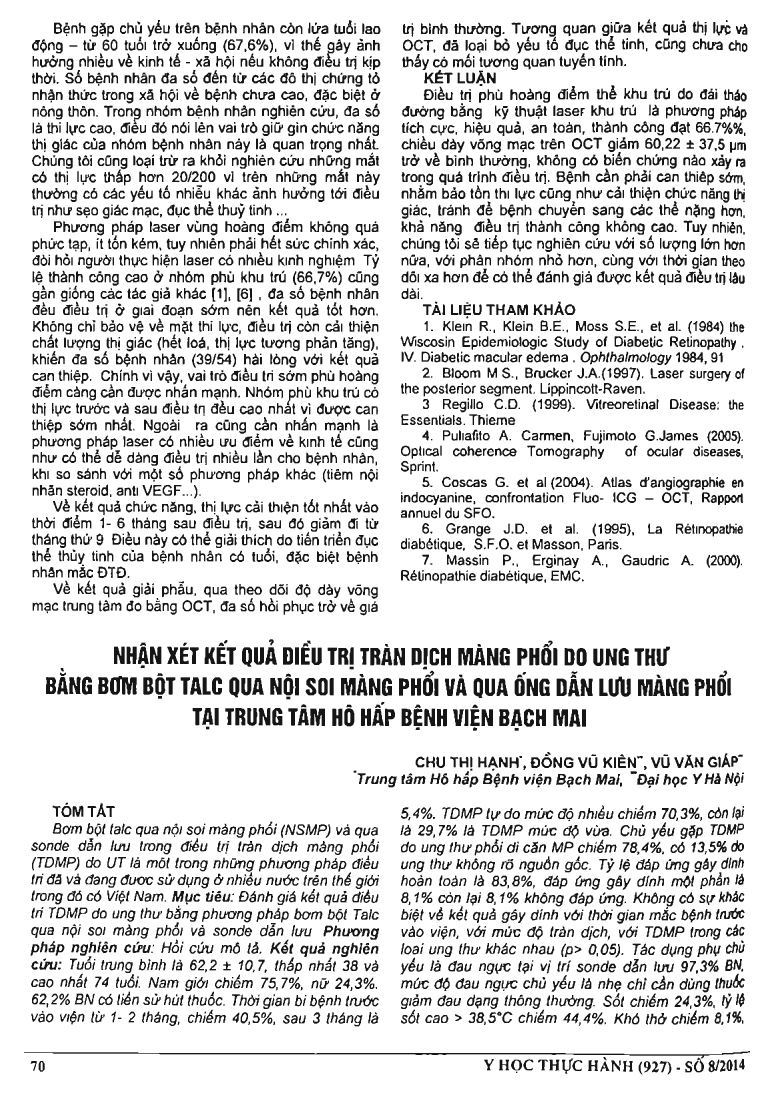
Pumping talc through pleural endoscopy and chest drain in treatment for malignant pleural effusion due to cancer is one of treatments that have been used in many countries around the world including Vietnam. Objective: Evaluate result of treatment malignant pleural effusion with method pumping talc through pleural endoscopy and chest drain. Research method: retrospective descriptive. Result: Average age: 62.2 +/- 10.7 years old, lowest: 38 years old, highest: 74 years old. Male accounted for 75.7 percent, female accounted for 24.3 percent. 62.2 percent of patients had a history of smoking. Duration of illness before admission: 1-2 months: 40.5 percent; after 3 months: 5.4 percent. Freely large pleural effusion accounted for 70.3 percent, moderate effusion: 29.7 percent. Majority was lung cancer matastasis to pleural (78.4 percent), 13.5 percent of patients had unknown origin cancer. The response rate were fullsticky 83.8 percent, partial sticky 8. 1 percent, and 8.1 percent no response. There was not difference in result of sticky with duration of illness, the degree of effusion and the types of cancer (p0.05). The main side effects were chest pain (accounted for 97.3 percent, majority was mild that only need to be used common pain medications), fever (accounted for 24.3 percent, the rate of high fever accounted for 44.4 percent, dyspnea (8.1 percent, mainly mild dyspnea). Conclusion: Talc pleurodesis through pleural endoscopy or chest drain is effective method in treatment for malignant pleural effusion that had success rate was 83.8 percent. This method is relatively safe with some insignificant side effects as mild chest pain, fever and can be applied in clinical practice.
- Đăng nhập để gửi ý kiến
